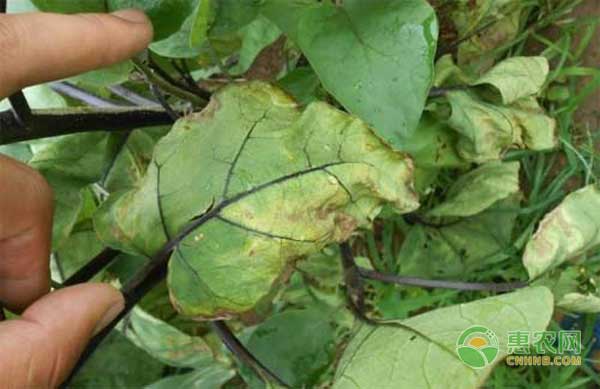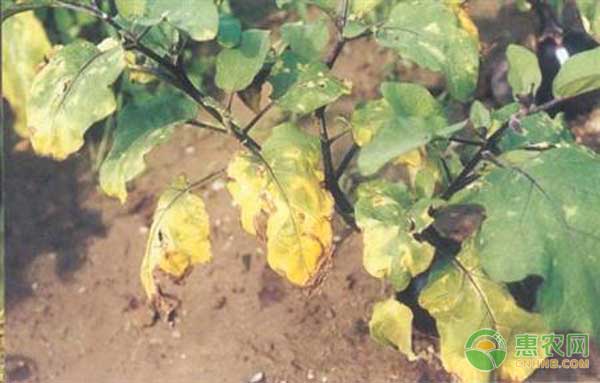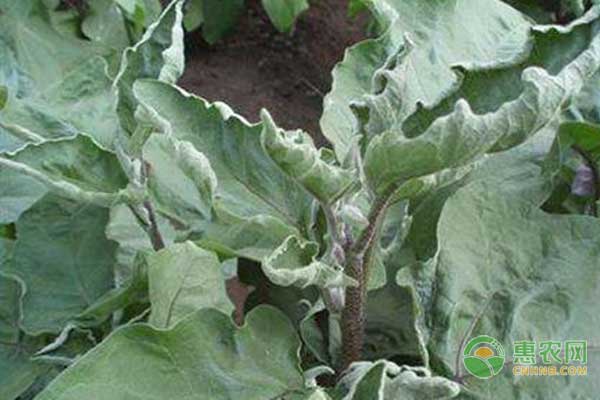Eggplant is one of the most cultivated vegetable varieties in the south. It is easy to be infected with bacterial wilt (also known as bacterial wilt) during planting. It is similar to verticillium wilt and blight, and is easily misjudged. Once the eggplant is infected with bacterial wilt, the incidence is about 30%, and the severe one is destroyed. Today Xiaobian talks about how to correctly identify and prevent bacterial wilt.

1 harm symptoms
Generally, the seedling stage does not occur, and symptoms begin to appear after entering the flowering result period.
1 In the initial onset of the whole plant, only one or several leaves in the upper part of the individual branches are lighter in color, showing local wilting, then the lower leaves are wilting, and the middle leaves are wilted at the latest, and the initial stage can be restored in the evening or in the morning, but after several days No longer recovered, the leaf color is normal or slightly light, and later turned yellow or brown due to the gradual decomposition of chlorophyll, and finally burnt out. Some whole plants occur at the same time. The roots and stems of the diseased plants did not change significantly, which was normal. The whole plant died when the disease was severe.
2 The base of the stem was cut at the base of the diseased stem and it was found that the xylem became brown. The disease begins at the base of the stem and later extends to the branches. The pith segments and the pith of the branches are mostly ulcerated or hollow, and the cross-section of the diseased stem is squeezed by hand. When the humidity is high, there is a small amount of milky white mucus overflow (a typical symptom of the disease). The diseased stem is placed in a clear cup, and a large amount of white pus is spilled like a mist on the naked eye, and there is no pus overflow in the stem section of the verticillium wilt and healthy plants.
There were no obvious symptoms on the surface of the three roots, but the root crown was cut longitudinally, and the central part of the root crown was obviously browned.

2 pathogen
R. solanacearum, also known as Pseudomonas aeruginosa, belongs to the genus Bacillus. The short cells of the short cells are single-celled, round at both ends, solitary or twin, (0.9-2.0) μm × (0.5-0.8) μm, 1 to 3 of the flagella, and Gram-negative. The bacteria can use a variety of sugars to produce acid, can not liquefy gelatin, and can reduce nitrate.
3 pathogenesis and transmission route
The pathogen can survive for about half a year in the seed or host. Once it leaves the host, it can only survive for 2 days, but in the soil it can survive for 14 months to 6 years. The pathogen mainly winters in the soil, and in the second year, it spreads with rain, irrigation water and soil, and invades from the root of the host or the base of the stem. High temperature and high humidity are the main conditions for the occurrence of the disease. The onset temperature is 30-37 °C, and it is easy to be popular in summer. The soil temperature is 25 °C, and the peak of the disease occurs in the field. The long-term continuous cropping, the weather becomes fine after the soil moisture is high for a long time, and the high groundwater level and weakly acidic fields are easy to occur.
4 Comprehensive prevention
4.1 Agricultural control
Rotation with grasses, melons, onion and garlic or cruciferous crops for more than 4 years. Use resistant varieties, high ridges or sorghum, and use Torubum as a rootstock for grafting cultivation. Watering with drip irrigation or micro-irrigation facilities to avoid flooding of large water, proper control of watering during the onset period, formulation and fertilization, and application of phosphorus and potassium fertilizer.
4.2 Seed disinfection
It can be incubated with warm water of 52 °C or 30% with 30% neo-phytomycin. Or soak seeds with 0.1 billion live spores/g of Bacillus polymyxa fine granules 300 times, or 0.3 g/m2 of seedbed.
4.3 Soil disinfection
Solar heat can be used for soil disinfection during the hot summer season. Or 667 m2, mix slaked lime 100-150 kg with broken straw or wheat straw 1 000-2 000 kg, then apply the soil surface, then plow and pour enough water to cover the mulch, seal the greenhouse or greenhouse for about 20 days to make the soil The temperature continues at around 50 °C, killing the bacteria in the soil.
4.4 Prevention and control of underground pests
The pathogens mainly invade from the roots or the roots of the stems. Therefore, it is necessary to prevent the underground pests such as cockroaches and cockroaches from being damaged, so as to prevent the underground pests from injuring the roots and reducing the probability of pathogens invading from the roots or stem bases. Use 30% trichlorfon emulsifiable concentrate 500 times solution, 50% phoxim emulsifiable concentrate 1 000 times solution, or 80% trichlorfon soluble powder 1 000 times solution for watering or spraying.

4.5 Biological control
After planting or early onset, 1 billion live spores/g Bacillus subtilis 700 times solution, 100 billion live spores/g Bacillus subtilis wettable powder 1,500 to 2,000 times solution, 800 million live spores/ g. Bacillus cereus wettable powder 100-200 times liquid, 80% allicin emulsifiable concentrate 1 000-1100 times liquid or 77% copper hydroxide wettable fine particle powder 500 times liquid spray or root irrigation, each irrigation The liquid is 250-500 mL.
4.6 Chemical control
After planting or early onset, you can use 5% bactericidal water clearing agent 200 times solution, or 47% Chunlei·Wang copper 600 times solution + 3% carbendazim 800 times solution, 14% guanidine copper water agent 300 times solution, 50% succinic acid copper WP 500 times solution, 20% thiabend copper suspension 600 times solution, 25% thiazolidine WP 500 times solution, 20% sodium dichloroisocyanurate soluble powder 300 times Liquid, 42% trichloroisocyanuric acid soluble powder 3,000 times solution, 50% chlorobromoisocyanuric acid soluble powder 1500 times solution, 3% gold ribomycin water 300 times solution, 20% thidium copper suspension Spray 300 times liquid, 20% thiazole zinc suspension 400 times solution, 20% thiabendazole wettable powder 600 times solution, etc. Spray or irrigate, each planting solution 250-500 mL, once every 7 days, even Drain 3 to 4 times, pay attention to the use of drugs. It is found that the diseased plants should be removed in time to prevent the spread of the disease, and a little lime is sprayed on the diseased spots to prevent the spread of the bacteria.
Although eggplant bacterial wilt is easy to be similar to verticillium wilt and blight, it can be discerned if it is carefully observed, so that early treatment can be avoided to avoid further damage.
Dietary supplement
Fufeng Sinuote Biotechnology Co.,Ltd. , https://www.sntextract.com